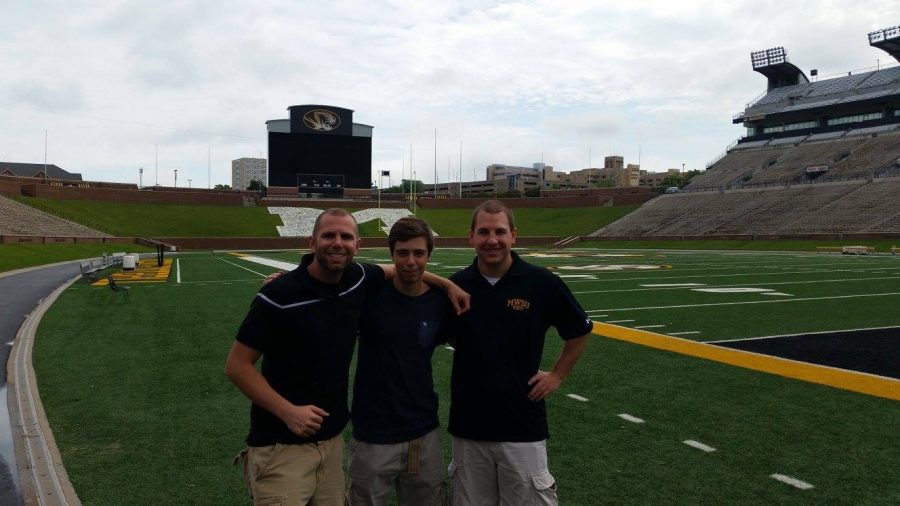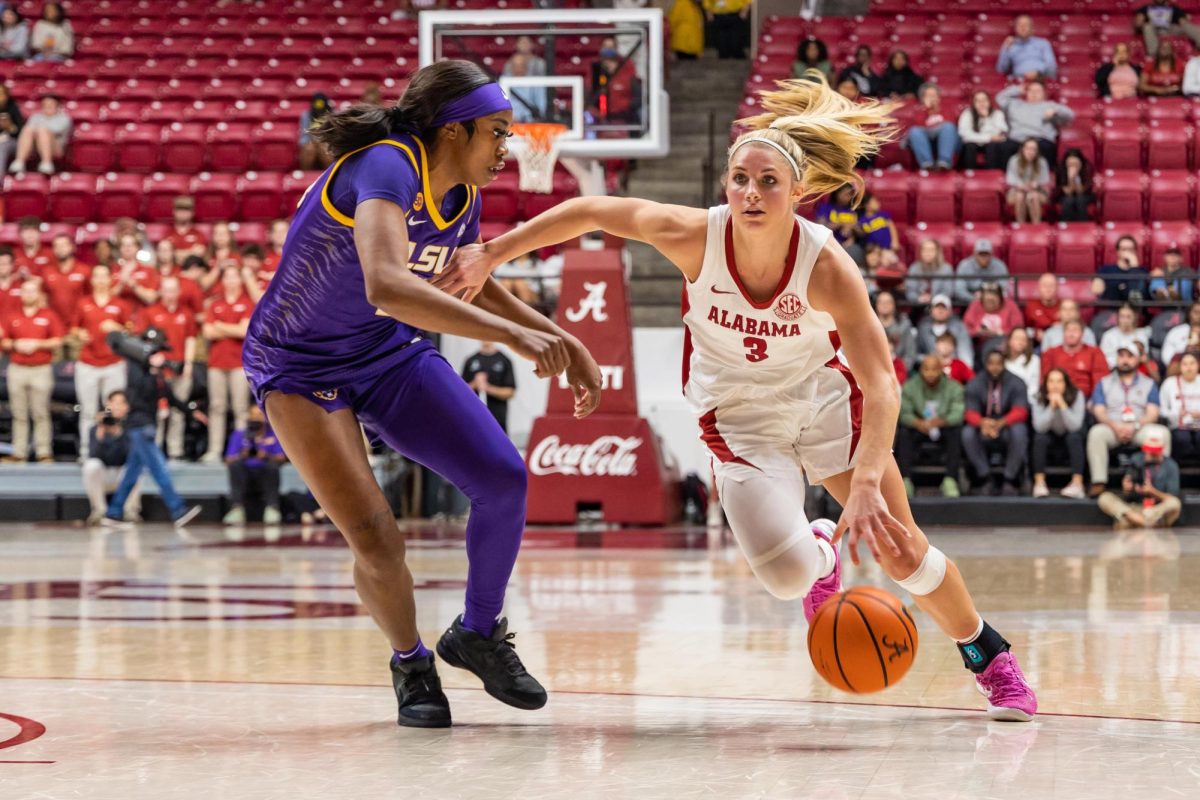Clint Switzer felt anxious as he looked up at Bryant-Denny Stadium. He could feel the sweat on his palms, but he urged his drone to fly higher. His documentary “Stadium Crashers” needed the aerial footage to set it apart.
In the previous week, the documentary overcame a run in with the police in Knoxville, Tennessee and construction in Lexington, Kentucky, but Bryant-Denny Stadium still loomed large.
“I flew it outside Bryant-Denny, that was the scariest one,” Switzer said. “There’s people walking by, you take it up, take it up hundreds of feet in the air over that stadium. It was daunting.”
Switzer and fellow crasher Noah Gronniger worried that someone would alert the police. They carried legal documents proving that the two were within the bounds of the law to fly their drone up to 400 feet high, but drone law was not well defined and any misunderstanding could prevent them from completing their project as envisioned.
Switzer, a passionate Missouri Tigers fan, and fellow Missourian, Gronniger, set aside nine days during the summer of 2015 to tour all 14 SEC football stadiums.
“Make time for your passion or hobby and try to make it a career and just follow your dreams and just never give up,” Gronniger said.
The enthusiasm Switzer and Gronniger have for the sport of college football is evident in the documentary, but it is the drone footage of all 14 SEC stadiums that really takes “Stadium Crashers” to the next level.
Switzer said he got the idea for the aerial shots while watching “Draft Day” almost a month before the road trip began.
“We didn’t know what drones were or how to use them so we had to go out and find a drone that was reasonably priced to fit into our budget and we crashed it the very first second it took off,” Switzer said.
As nerve-wracking as it was to fly the drone over Bryant-Denny Stadium, the duo also had to figure out a way into the locked complex. Thanks to the help of an officer, the two crashed Bryant-Denny Stadium.
Once inside, the tradition and history of the program caught up with them.
“It almost felt like [Paul] ‘Bear’ Bryant was watching over you and not necessarily in a nice calm way either,” Switzer said. “…You almost felt like you were in the shadows of this wonderful tradition. To me Bryant-Denny was just an unbelievable experience and I can’t wait till Mizzou plays down there so I can come to a game.”
Both crashers have toured stadiums outside of the SEC footprint, but both felt like Bryant-Denny Stadium might have been the most impressive empty stadium they have seen. The trip to Tuscaloosa, and the rest of the SEC, never would have been possible if not for Missouri’s acceptance into the conference prior to the 2012 football season.
“For me I just felt two words when I thought [about Missouri joining the SEC]: game-changer,” Gronniger said. “Kind of a down-on-their-luck program in the Big 12, the Colorado infamous fifth down game, the kickball against Nebraska coming out of the backside of those, losing those. This is a game-changer in terms of recruiting, [and] as far as facilities. Yeah, it’s a tougher road to to hoe, but you’re going to have the better athletes and the better facilities.”
Despite the conference change, the first season was rough for Missouri fans like Switzer. The Tigers finished fifth in the SEC East in 2012 with a 5-7 overall record and a 2-6 mark in the SEC.
“I remember telling people [after 2012] they were right we can’t compete here, send us back to the Big 12,’” Switzer said. “Then 2013 happened- I was actually at the SEC Championship Game against Auburn. I thought Missouri actually had a great chance to win that game and play for a national championship and to think that came within a year’s time was unbelievable.”









